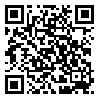Volume 10, Issue 5 (2019)
LRR 2019, 10(5): 101-127 |
Back to browse issues page
Download citation:
BibTeX | RIS | EndNote | Medlars | ProCite | Reference Manager | RefWorks
Send citation to:



BibTeX | RIS | EndNote | Medlars | ProCite | Reference Manager | RefWorks
Send citation to:
Pishghadam R, Ebrahimi S. Teaching Grammar Revisited: An Introduction to Applicative Teaching. LRR 2019; 10 (5) :101-127
URL: http://lrr.modares.ac.ir/article-14-26951-en.html
URL: http://lrr.modares.ac.ir/article-14-26951-en.html
1- Professor of English Language Education and Educational Psychology- Ferdowsi University of Mashhad , rpishghadam@yahoo.com
2- Assistant Professor of Persian Language Teaching- Ferdowsi University of Mashhad
2- Assistant Professor of Persian Language Teaching- Ferdowsi University of Mashhad
Abstract: (7577 Views)
Among the most controversial issues in language teaching is teaching grammar. Some educational approaches pay significant attention to linguistic forms and believe that language teaching is equal to teaching grammar (Nassaji & Fotos, 2011). Nowadays, a more rational approach is taken regarding teaching grammar. Learning grammar is argued to be necessary for uttering correct sentences and paying simultaneous attention to form and function is a must in language teaching. Robins (as cited in Safavi, 2011, p.25) is of the view that “language should be considered as a system with mutually-related dependent factors. These factors are either lexical, syntactical, or morphological.” Therefore, syntax can be considered as the organizing element for these factors. Based on prioritizing syntax in language teaching, various methods have been taken into consideration, among which traditional ones, such as Grammar-Translation Method (GTM), put a great emphasis on teaching grammar deductively. On the other hand, methods, such as Audiolingualism, suggest inductive teaching because they believe verbal communication is as essential as grammatical forms. Meaning-based approaches pay attention to meaning, and in their extreme extensions, such as natural approach, grammar is completely put aside. Communicative approaches, as the name suggests, highlight the communicative aspects of language, and grammar, along with other components of language, is utilized to improve communicative competence.
By introducing the cognitive approach, whose idea revolves around the fact that the structure of language reflects our thoughts, the role of senses and cognition in teaching linguistic components, including grammar, became important. By means of such approaches, learners can objectify abstract concepts through their senses and use critical thinking, futures thinking, and creative thinking to learn the language more thoroughly. Here, grammar is not merely a set of memorized rules, but it is a tool by which learners can think better. The present study, therefore, intends to introduce an educational approach that include various levels of senses, because we are of the view that grammar should be thought more dynamically to improve the learners’ reflection. This, we believe, can be achieved by a new categorization based on thick-slice and thin-slice sensory teaching, which is beyond theoretical teaching, and includes practical teaching and thinking skills teaching. The presented approach, applicative teaching, whose name is a mixture of application and reflection, teaches students how to think critically, creatively, and futuristically. Based on this approach, grammar teaching starts with theoretical, form-based aspects and moves to practical, function-based aspects, and tries to fixate the rules by making students think about what has been taught. Results show that by involving senses and cognition, learners’ awareness, creativity, and communicative competence are improved, which can consequently help them learn the grammatical rules better. In this vein, teachers can employ those tasks that boost students’ creative thinking and critical thinking to teach grammar applicatively.
By introducing the cognitive approach, whose idea revolves around the fact that the structure of language reflects our thoughts, the role of senses and cognition in teaching linguistic components, including grammar, became important. By means of such approaches, learners can objectify abstract concepts through their senses and use critical thinking, futures thinking, and creative thinking to learn the language more thoroughly. Here, grammar is not merely a set of memorized rules, but it is a tool by which learners can think better. The present study, therefore, intends to introduce an educational approach that include various levels of senses, because we are of the view that grammar should be thought more dynamically to improve the learners’ reflection. This, we believe, can be achieved by a new categorization based on thick-slice and thin-slice sensory teaching, which is beyond theoretical teaching, and includes practical teaching and thinking skills teaching. The presented approach, applicative teaching, whose name is a mixture of application and reflection, teaches students how to think critically, creatively, and futuristically. Based on this approach, grammar teaching starts with theoretical, form-based aspects and moves to practical, function-based aspects, and tries to fixate the rules by making students think about what has been taught. Results show that by involving senses and cognition, learners’ awareness, creativity, and communicative competence are improved, which can consequently help them learn the grammatical rules better. In this vein, teachers can employ those tasks that boost students’ creative thinking and critical thinking to teach grammar applicatively.
Send email to the article author
| Rights and permissions | |
 |
This work is licensed under a Creative Commons Attribution-NonCommercial 4.0 International License. |







